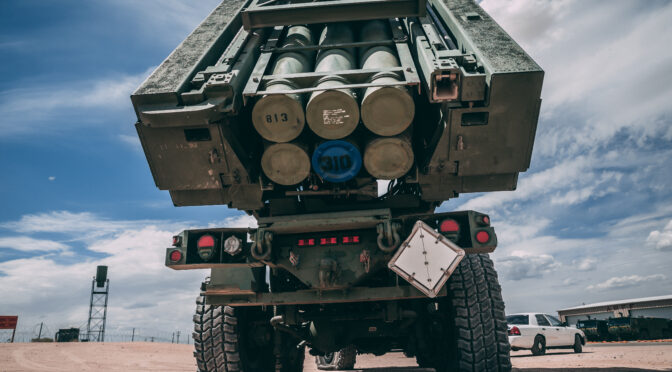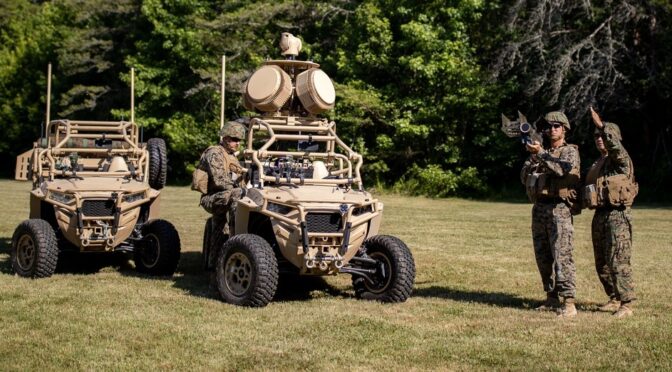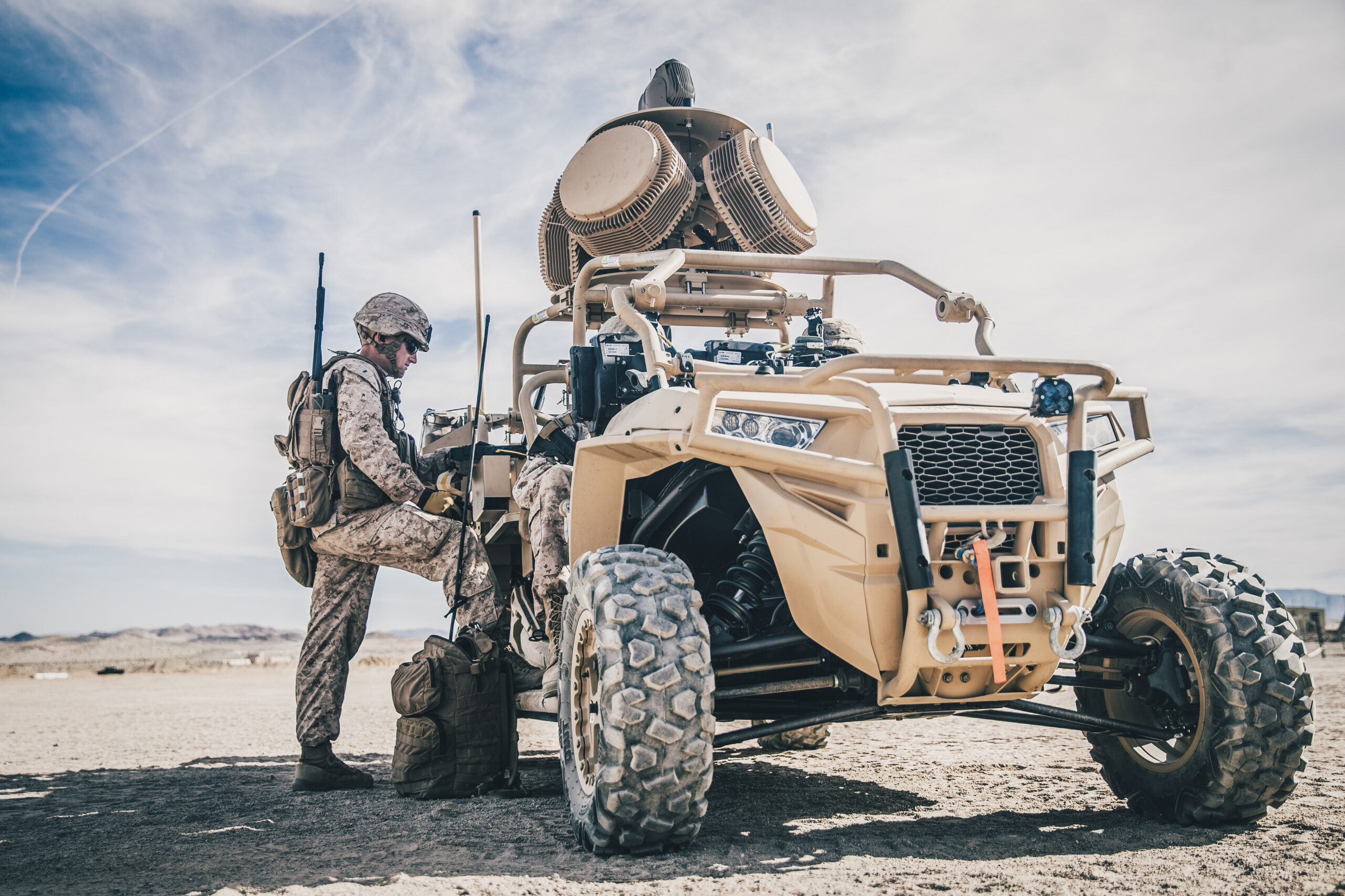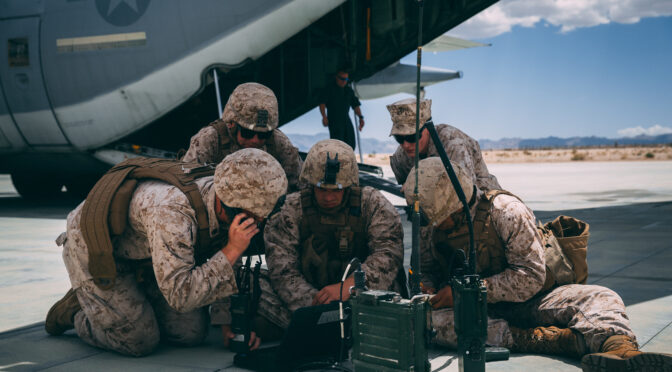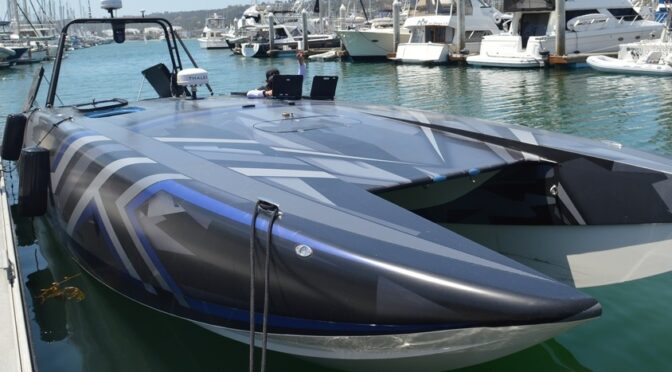Transforming the Marine Corps Topic Week
By George Galdorisi
The United States Marine Corps is in the process of transforming in ways that will have a profound impact on how the service helps ensure the security and prosperity of America in this decade and beyond. Documents such as the Commandant’s Planning Guidance, Force Design 2030, and others have staked out a plan for a dramatic change in force structure as well as a substantial transformation of operating concepts. The objective of these changes is to enable the Marine Corps to prevail against adversaries in an era of great power competition.
Looking to ongoing conflicts, while it will take months – or even years – to tease out all of the lessons learned from the conflict in Ukraine, one that will likely be examined in war colleges, think tanks, and other venues is the vital importance of logistics.
It should come as no surprise that logistics has emerged as a crucial factor in the wars of the third decade of the 21st Century. The importance of this discipline goes back as far as recorded warfare. Over 2,300 years ago, Alexander the Great put it this way: “My logisticians are a humorless lot…they know if my campaign fails, they are the first ones I will slay.” In the maritime domain, Captain Alfred Thayer Mahan said: “Logistics are as vital to military success as daily food is to daily work.” During Operation Desert Storm, the 7th Corps Commander, U.S. Army Lieutenant General Fredrick Franks noted: “Forget logistics, you lose.”
That said, of all the military stakeholders that depend on logistical sustainment, the U.S. Marine Corps is one that will likely be mining these lessons learned in depth.
Marines in the fight use enormous quantities of fuel, food, ammunition, and other material in operations. Taking and holding islands in forward areas poses especially challenging logistical complexities. The mission will ultimately fail if the Marines are not able to have reliable and continuous sustainment in order to press the fight.
Marine Corps professionals have highlighted the importance of providing rapid and reliable sustainment as a critical factor in supporting Expeditionary Advanced Base Operations (EABO), with one officer quoting the Commandant General David Berger’s Commandant’s Planning Guidance noting:
“The Navy and Marine Corps will need improved logistics capabilities: We must reimagine our amphibious ship capabilities, prepositioning, and expeditionary logistics so they are more survivable, at less risk of catastrophic loss, and agile in their employment.”1
Traditional methods of resupplying Marines will not work, especially against a peer adversary like China which has substantial anti-access/area denial (A2/AD) systems that pose a serious risk for existing Navy and Marine Corps logistics platforms. Other writing has pointed out that EABO is vitally dependent on reliable logistics resupply, noting:
“The inherent risk in EABO is that traditional maritime logistics will be unable to support and sustain these groups in the contested environment. U.S. forces may not have access to stocks and supplies prepositioned in other nations. Unfortunately, EABO concepts only exacerbate this long-standing problem. Marine and Navy leaders and outside agencies have been calling attention to it for years.”2
Advanced base operations could involve Marines being cut off from sustainment, whether as forces that have been blockaded or forces that have been bypassed by opposing naval forces. Marines will require robust pre-positioned stocks to have enough self-sufficiency to continue the fight in the absence of sustainment, and sustainment assets must be more distributed and risk-worthy than legacy platforms. Unmanned systems can fill this gap.
The U.S. Navy-Marine Corps Team Leverages New Technologies
Given the extensive A2/AD capabilities potential peer adversaries possess, vessels providing logistics sustainment will likely be subjected to withering enemy fire as they try to deliver vital supplies to Marines in advanced bases and operating within the adversary’s weapons engagement zone. Using manned naval craft for this sustainment mission puts operators at unnecessary risk of enemy fire, as well from near-shore obstacles. Using scarce manned craft to perform this mission also takes them away from more necessary roles. That is why this major Navy-Marine Corps amphibious exercise evaluated the ability of unmanned surface vehicles to conduct the sustainment mission.
Because of their long hiatus away from amphibious operations, the U.S. Marine Corps has recently been especially proactive in organizing a large number of amphibious exercises, experiments, and demonstrations to investigate emerging technologies (often commercial-off-the-shelf technologies–COTS) to enable expeditionary strike formations to prevail in the face of a determined adversary possessing robust A2/AD capabilities.
One U.S Navy-Marine Corps exercise, Joint Exercise Valiant Shield, focused specifically on the logistics function. Valiant Shield demonstrated the ability of commercial off-the-shelf technology – in this case, unmanned surface vehicles – to perform one of the more important functions needed by amphibious formations – that of logistics.
This is a solution teed up by the two U.S. Naval Institute Proceedings articles cited earlier. Indeed, as First Lieutenant Flynn suggested:
“Similar to the flexibility and the variety of logistics platforms that ground commanders have at their disposal, UUVs and USVs can increase flexibility for naval commanders. Such versatile platforms could be adapted to resupply warships at sea and Marine Corps forces on land.”3
Valiant Shield, overseen by Commander Marine Forces Pacific (MARFORPAC), looked to use emerging commercial off-the-shelf technology to support Marines on the beachhead during this critical juncture of an amphibious assault. To this end, a significant part of this exercise focused on logistics.
MARFORPAC used USVs during exercise Valiant Shield to resupply the landing force. The exercise coordinator used a catamaran hull, 12-foot MANTAS USV to provide rapid ship-to-shore logistics sustainment. While this small, autonomously operated USV carried only 120 pounds of cargo, the proof-of-concept worked and demonstrated that unmanned surface vehicles could effectively resupply troops ashore. That said, resupply in 120-pound increments is far less than is required to provide what is needed by Marines in expeditionary advanced bases. The Valiant Shield exercise provided the impetus and inspiration to continue to explore the use of USVs for force sustainment. Now the Navy and Marine Corps are looking to scale-up small USVs and continue to experiment with using larger USVs to provide larger sustainment quantities.
While there are a range of larger USVs that can be evaluated by the Navy and Marine Corps, the basic specifications of the 38-foot Devil Ray “Expeditionary Class” (T38) will provide an indication of the ability of USVs to provide a steady, continuous stream of logistics support to Marines on the beach. The T38 can carry a payload of 4,500 pounds. The vessel travels at cruise speed of 25 knots and draws just 18 inches of draft. Additionally – and importantly for Marines in conflict – the T38 has a burst speed of 80 knots.
More robust logistics resupply can be provided by larger USVs of the same family of expeditionary unmanned surface vehicles as the MANTAS and Devil Ray. The T50 Devil Ray can carry a payload of 10,000 pounds. Like its sister T38, the T50 Devil Ray has a cruise speed of 25 knots and a burst speed of 80 knots. Given the speed and carrying capacity of the T38 and T50, it is readily apparent that they can support the rapid buildup of combat power in a contested space.
This logistics concept would also complicate an adversary’s attempts to interdict resupply operations. Rather than hunting down and killing single large, slow, vulnerable surface ships, a mothership could deploy multiple unmanned surface vehicles to complicate targeting efforts through a distributed operating concept. This would force the adversary to hunt and destroy each individual USV rather than simply tracking and destroying a surface ship moving between advanced bases or warships and resupplying them one at a time.4
A New Paradigm for Marine Corps Logistics Sustainment
While there are any number of scenarios that can be offered to demonstrate how unmanned surface vehicles can support Marines ashore, it is worth mentioning that while unmanned surface vehicles offer substantial promise to aid future expeditionary operations, USVs should not completely replace traditional means of supplying Navy and Marine Corps forces. Rather, they will supplement them by providing numerous, risk-worthy platforms to move supplies within the threat range of an adversary’s weapon systems, as will be required in EABO. These platforms could fulfill the requirements General Berger outlined in his Planning Guidance: they are more survivable, at less risk of catastrophic loss, and agile in their employment.5 These unmanned surface vehicles have the potential to be game changers for logistics in a contested environment.
Using a notional stand-off distance for an expeditionary strike group of 20 nautical miles, a formation equipped with four T38s traveling at their cruise speed of 25 knots could deliver 18,000 pounds of material from amphibious ships to the beach per hour, allowing the short time needed for loading and unloading the craft. Multiply that by 24 hours and it yields a buildup of well over 400,000 pounds of vital material per day, enough to support a substantial force of troops ashore. Using four T50s in a similar manner, the amount of vital material delivered approaches one million pounds a day.
Until recently, getting these medium-sized unmanned surface vehicles to the area of operations where they could provide logistics support to Marines on the beach was problematic. The amphibious warships comprising expeditionary strike groups are loaded with vehicles and supplies needed by their embarked Marines. What is needed is a mothership for USVs. These will soon enter the fleet. The Navy recently announced its intention to spend $2.7B researching and buying ten large unmanned surface ships over the next five years.6 The Navy envisions these LUSVs as being 200 feet to 300 feet in length and having full load displacements of 1,000 tons to 2,000 tons. These LUSVs could carry numbers of T38s and T50s combat loaded with needed supplies.
Under this CONOPS, presented in detail in a March 2022 article in Naval Engineers Journal, one or more LUSVs would be attached to an expeditionary strike group and carry these T38s and/or T50s. Supervisory control is coordinated by the expeditionary strike group commander or his designees.7 Under this CONOPS, the expeditionary strike group can leverage the extended cruising range of the T38 and T50 to stay well clear of adversary A2/AD capabilities, as the T38 has a cruise range of 1,000-1,500 nautical miles, and the T50 has a cruise range of 1,500-2,000 nautical miles.
Into the Future with Enhanced Logistics Sustainment and Enhanced Sensor Support
The Navy and Marine Corps are planning an ambitious schedule of exercises, experiments, and demonstrations in the years ahead, focused on the Commandant’s “Campaign of Learning.”8 It is time to once again demonstrate how unmanned surface vehicles can provide robust logistics sustainment to Marines. Based on the promising performance of small unmanned surface vessels in exercises designed to demonstrate how USVs can support expeditionary assault forces, the Navy and Marine Corps would be well-served to experiment further with larger USVs to perform this vital logistics sustainment mission.
While the available evidence suggests that the Marine Corps should leverage USVs for logistics support as a first priority effort, Marines will likely look for other ways to leverage these unmanned vehicles, such as to provide the organic sensor support Marine Littoral Regiments will need in the future fight.
Marine Corps Warfighting Lab Director, Major General Benjamin Watson, put the need for organic sensors this way:
“A major investment for the service will include more sensors controlled by Marines instead of relying solely on joint tools for targeting awareness for the Marine Littoral Regiments. You’ve got to be able to sense the target before you can engage and a complete reliance on non-organic capabilities, like somebody else to do that sensing for us and find the target, confirm it, etcetera as part of the kill-chain is a position we prefer not to be in. We’d prefer not to have that as our only option.”9
Fortunately, this is an area where the Marine Corps is already experimenting with ways to use unmanned surface vehicles equipped with various sensors to provide intelligence, surveillance, and reconnaissance (ISR) and intelligence preparation of the battlefield (IPB). During the Ship-to-Shore Maneuver Exploration and Experimentation (S2ME2) Advanced Naval Technology Exercise (ANTX) the amphibious assault force employed an unmanned surface vehicle (USV) proactively to thwart enemy defenses. The MANTAS USV swam undetected into the “enemy” harbor (the Del Mar Boat Basin on the Southern California coast), and relayed information to the amphibious force command center. Subsequent to this ISR mission, the MANTAS USV was driven to the surf zone to provide IPB on water conditions, beach gradient, obstacle location, and other information crucial to planners prior to a manned assault.
In many ways, S2ME2 ANTX was a warm-up for, and precursor to, Bold Alligator, the annual Navy-Marine Corps exercise designed to enhance interoperability in the littorals and across the maritime domain. Bold Alligator took the concepts explored during S2ME2 ANTX to the next level, employing two different size MANTAS USVs in the ISR and IPB roles to provide long-range littoral reconnaissance of “enemy” beaches and waterways. These systems were employed during the Long Range Littoral Reconnaissance (LRLR) phase of the exercise. The beauty of using unmanned surface vehicles for the logistics – as well as the ISR/IPB missions – is that the same USVs can be employed by reconfiguring them for these missions, as well as others such as mine-countermeasures.
Conclusion
Force Design 2030 calls for a U.S. Marine Corps that “Can execute the complex missions defined by our emerging concepts in any potential theater.”10 Complex missions demand innovative solutions and leveraging the good work that has gone into evaluating unmanned surface vehicles to support a number of expeditionary missions is one of the surest ways to ensure the U.S. Marine Corps prevails in a future high-end fight.
Captain George Galdorisi (U.S. Navy, retired) is the Director of Strategic Assessments and Technical Futures for the Naval Information Warfare Center Pacific. Prior to joining NIWC Pacific, he completed a 30-year career as a naval aviator, culminating in 14 years of consecutive service as executive officer, commanding officer, commodore, and chief of staff. During his final tour of duty he led the U.S. delegation for military-to-military talks with the Chinese Navy. In his spare time he enjoys writing, especially speculative fiction about the future of warfare. He is the author of fifteen books, including four consecutive New York Times bestsellers. He is co-editor of the U.S. Naval Institute book, AI At War: How Big Data, Artificial Intelligence and Machine Learning Are Changing Naval Warfare. His most recent novel, Fire and Ice, is eerily prescient of today’s events, as it foresaw Russia’s invasion of Ukraine.
References
[1] Karl Flynn, “Unmanned Vessels for EABO,” U.S. Naval Institute Proceedings, November 2021.
[2] Walker Mills and Erik Limpaecher, “Sustainment Will Be Contested,” U.S. Naval Institute Proceedings, November 2020.
[3] “Unmanned Vessels for EABO.”
[4] Megan Eckstein, “Navy, Marines Moving Ahead with Unmanned Vessel Programs,” USNI News, October 31, 2019.
[5] General David Berger, Commandant’s Planning Guidance (Washington, DC: Headquarters U.S. Marine Corps, July 2019).
[6] Ronald O’Rourke, Navy Large Unmanned Surface and Undersea Vehicles: Background and Issues for Congress – CRS Report 45757 (Washington, D.C.: Congressional Research Service, March 31, 2022).
[7] George Galdorisi and Jack Rowley, “Engineering Unmanned Surface Vehicles Into an Integrated Unmanned Solution,” Naval Engineers Journal, March 2022.
[8] James Hammond, “U.S. Marine Corps in Review,” U.S. Naval Institute Proceedings, March 2022.
[9] Sam LaGrone, Mallory Shelbourne and Heather Mongilio, “Fewer Marines, More Sensors Part of Berger’s Latest Force Design Revision,” USNI News, May 9, 2022.
[10] Force Design 2030 (Washington, D.C.: United States Marine Corps, May 2022).
Featured Image: SAN DIEGO (April 17, 2021) Chris Valdez conducts pre-underway systems checks aboard the MANTAS T38 Devil Ray unmanned surface vehicle during an operations demonstration April 17. (U.S. Navy photo by Senior Chief Mass Communication Specialist Mike Jones)

